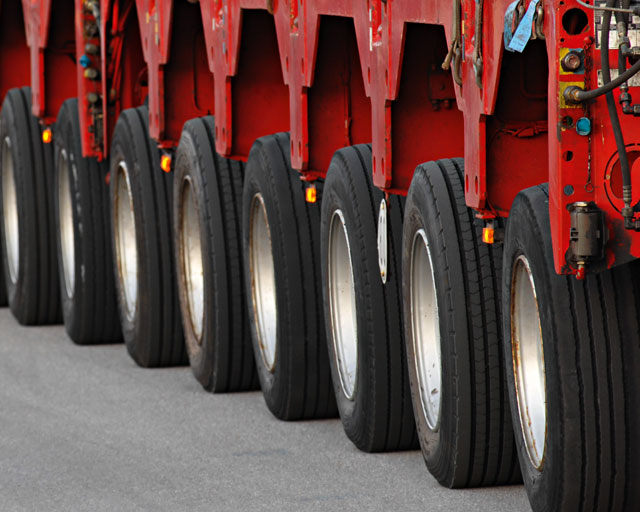Synthetic rubber – As high performing as natural rubber

The natural rubber used in applications like high-performance truck tires is irreplaceable. However, limited space for the cultivation of rubber trees and entire rubber plantations succumbing to fungal infestations have put global rubber production at risk. The four Fraunhofer institutes - IAP, IME, ISC and IWM – have set themselves the task of making synthetic rubber that is just as high performing as natural rubber. They want to learn from the rubber of the Russian dandelion.
Truck tires have to withstand extremely high stresses. In order to achieve this, natural rubber is used that is filled with carbon black or silicate. The elastomers made from the sap of the tropical rubber tree make the tires elastic and can be relied on, like no other material, to remain operational even under extreme loads. The demand by the rubber industry for natural rubber is steadily rising, particularly in the automotive sector. Today more than 90 percent of natural rubber comes from Asia. Rubber trees are planted here in monocultures, yet there is a limited amount of land for cultivation. Added to this is the fact that in Brazil, where rubber originates, all attempts to cultivate the trees have failed – the fungus Microcyclus ulei has destroyed entire plantations. Global production of rubber will be under threat if the fungus spreads to Asia. Researchers and rubber producers are looking for alternative raw materials so that there is less dependency on annual harvests.
Four Fraunhofer institutes want to unlock the secret of natural rubber. Their aim is to optimize synthetic rubber until its performance is on par with natural rubber. “The special material properties of natural rubber may be rooted in its composition. It contains proteins and lipids along with polyisoprene that has an extremely pure microstructure. These proteins and lipids stem from its biosynthesis and most likely interact with the polyisoprene,” explains Dr. Ulrich Wendler, project leader from the Fraunhofer Pilot Center for Polymer Synthesis and Processing PAZ in Schkopau, a joint initiative of the Fraunhofer Institutes for Applied Polymer Research IAP in Potsdam-Golm and for Material Mechanics IWM in Halle. »We want to learn from the rubber of the Russian dandelion. From a material perspective, it is just as powerful as the rubber from the rubber tree. This way, we want to develop new types of synthetic rubber,« says Wendler.
The scientists at the Fraunhofer Institute for Molecular Biology and Applied Ecology IME in Munster have spent years studying the basic principles of the biosynthesis of the natural rubber and associated lipids found in the Russian dandelion. They are now able to selectively switch off the key proteins involved. The Fraunhofer IWM in Halle and Freiberg will investigate the modified dandelion rubber for its thermal, mechanical and, above all, wear resistance properties. This will enable the scientists to discover which proteins or lipids influence its material properties. Suitable biomolecules can then be produced in connection with synthetic rubber at the Fraunhofer IAP - which specializes in the chemical synthesis on a laboratory and pilot plant scale - and retested at the Fraunhofer IWM. In order to find optimal alternatives to natural rubber for the automotive industry, the Fraunhofer Institute for Silicate Research ISC in Wurzburg will investigate adding innovative silica fillers as part of the project. One big plus factor: At the Fraunhofer PAZ, researchers have the possibility of producing the developed rubber on a ton scale – in other words, on a scale that can be used in trials by industry customers.
The BISYKA project started on March 17, 2015. Its aim is to conduct preliminary research that is market-oriented. It will receive funding from the Fraunhofer Society for a period of three years. During this time an external committee of experts from industry and science will accompany the project.
 Fraunhofer Pilot Plant Center for Polymer Synthesis and Processing PAZ
Fraunhofer Pilot Plant Center for Polymer Synthesis and Processing PAZ